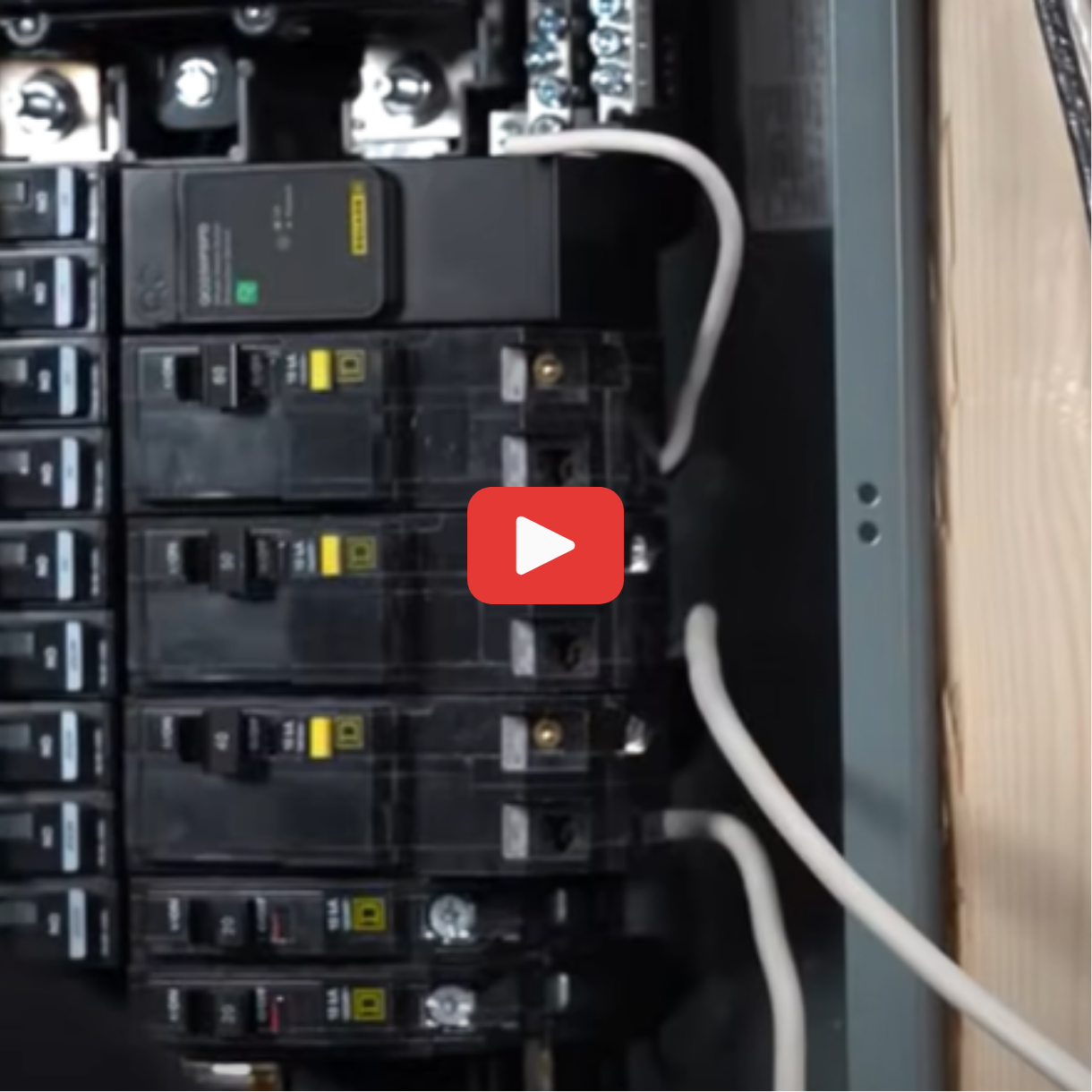Key Takeaways
- Use specific breaker types for efficient organization.
- Implement tidy wiring techniques for better function.
- Maintain clean setup methods throughout the panel.
Overview of Materials
QO Single-Phase 200 Amp Panel
You are working with a QO single-phase 200 amp panel, which includes a main breaker. This panel design helps streamline your setup by integrating a main breaker directly.
Arc Fault and Dual Function Breakers
Breakers have evolved to include arc fault and dual function variants. These breakers do not feature pigtails, simplifying wiring by reducing clutter inside the panel.
GFI Breakers for Two-Pole Circuits
GFI breakers for two-pole circuits are an essential component. You are using GFI breakers for various amperages like 60, 50, and 40 amp. They ensure safety by preventing ground faults.
Surge Protector Integration
Surge protectors installed in the panel improve electrical safety. These plug-and-play devices lack the need for additional wiring, promoting ease of installation and reducing the chance of errors.
Breaker Compactness and Plug-on Neutral
Compact breakers that utilize a plug-on neutral bar eliminate the need for extra wiring and minimize space usage. This design supports a more organized and efficient layout, especially beneficial in panels with limited space for multiple home runs.
Wire Types and Sizes
NM cable, known as non-metallic sheath cable or Romex, is primarily used. You might encounter different sizes, such as number 6, number 8, and number 12, depending on the application's requirements.
Fittings and Connectors
Appropriate fittings, including 2-inch Romex connectors and butterfly-style connectors, are crucial for organizing wires efficiently. Butterfly-style connectors allow for three pieces of 12/2 RX cable, providing versatility in managing different wire configurations.
Panel Layout Philosophy
Clean Installation
When installing a panel, it's critical to prioritize neatness and organization. You should focus on arranging wires and components to maintain a clean, accessible panel. Use plug-on neutral systems to reduce the number of wires. This results in less clutter, as it eliminates the need for pigtails with certain breakers. Group similar components, like all arc fault breakers in one area, to keep the panel orderly.
Consider using curly q loops to manage extra wire lengths. Wrapping a scrap wire around others keeps them organized and prevents tangling. Precision is essential when stripping sheaths from cables. Score lightly to avoid damaging the conductors. By minimizing wire crossings and bends, you enhance the aesthetics and function of the installation.
Systematic Breaker Arrangement
A systematic approach to arranging breakers ensures functionality and space efficiency. Separate different types, such as arc fault and dual function breakers, into distinct sections. This organization allows you to manage space better and makes the panel easy to navigate. Group two-pole and non-arc fault breakers on one side of the panel for consistency.
To avoid unnecessary obstructions, keep components like pigtails neatly aligned. Trimming excess length is acceptable if it keeps the installation tidy, while still ensuring adequate reach within the panel. Prioritize the back row first for neutrs, and align ground wires deep in the corners, maintaining a clear path for other conductors. This strategy helps in achieving an orderly panel layout, reducing future complications in maintenance or adjustments.
Wiring and Preparation Techniques
Cable Management
When setting up your panel, maintaining a clean and organized layout is crucial. Use extra wire to create loops, making sure everything stays neat. This method not only helps in organizing but also utilizes leftover wire efficiently. To keep wires separated and out of the way, consider using nails for additional support.
Sheathing Removal
Removing the sheathing from NM cable requires precision. Lightly score the sheathing with a fresh knife without penetrating the conductors underneath. This method ensures that cables are not damaged during preparation. Take your time to ensure that wires remain straight and undamaged throughout the process.
Pigtail Handling
Managing pigtails effectively contributes to a tidy setup. Feel free to trim pigtails to shorten them and keep them tidy in the back. It can reduce clutter significantly. Remember, contacting manufacturers confirms that cutting them short is safe, as long as they can still reach their designated connection points.
Ground and Neutral Workflow
Organize grounds and neutrals to streamline the workflow. Position grounds in the back corner of the panel and consider placing the ground bus at the bottom. This arrangement creates a clear path for conductors. Filling the back row first with neutrals helps in preventing any obstruction, keeping the front row available for future needs.

